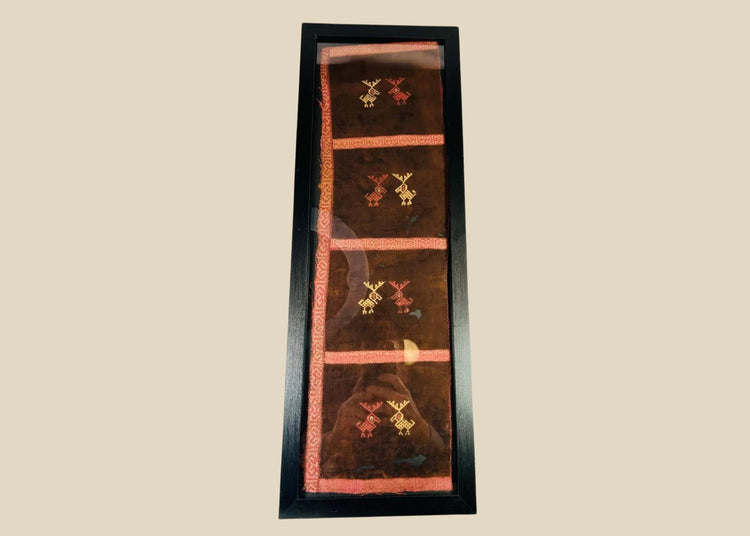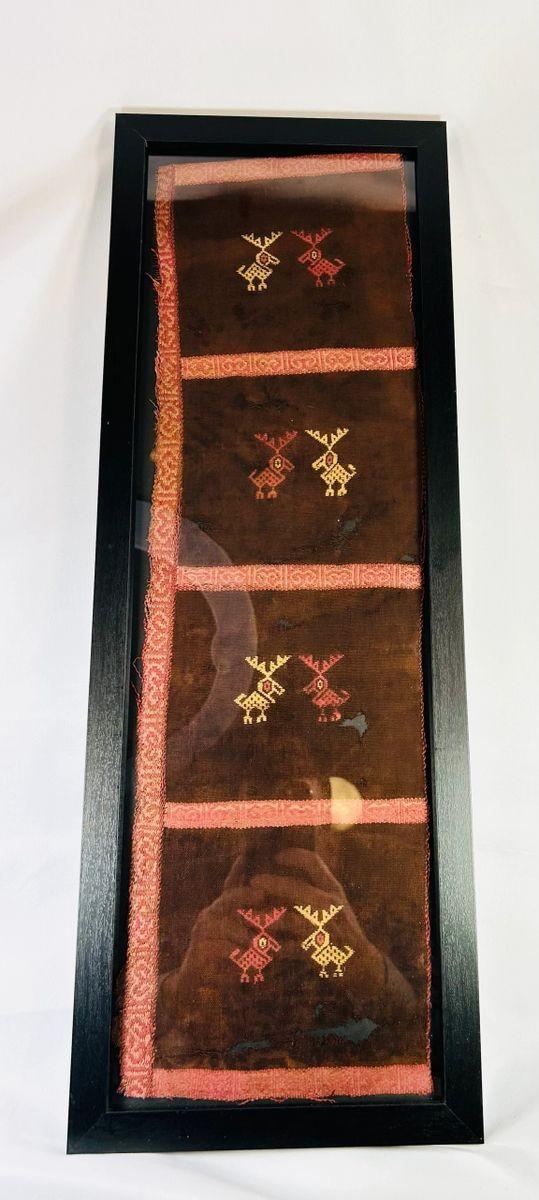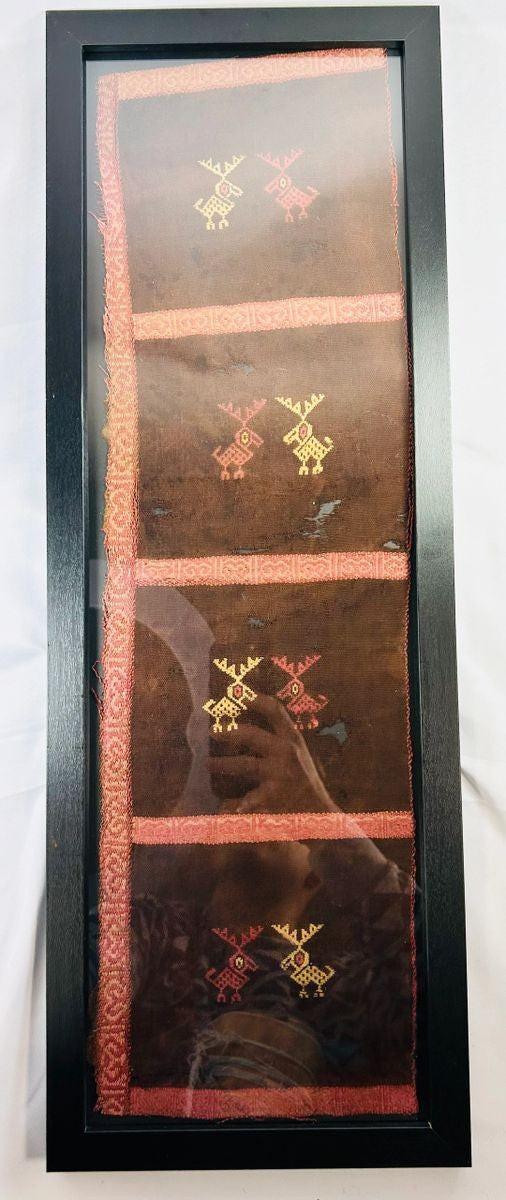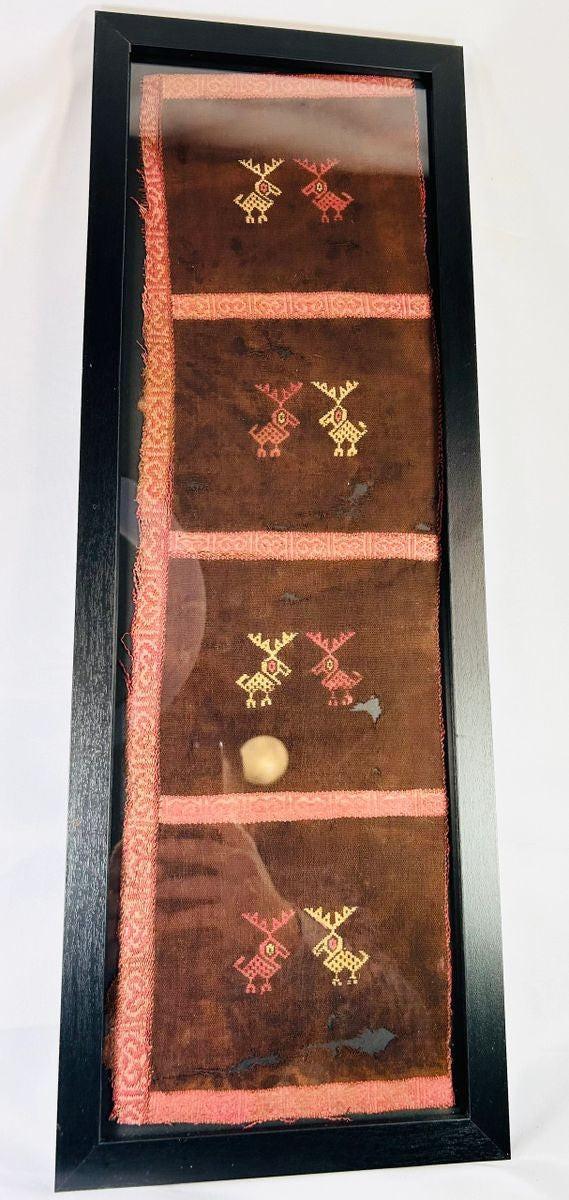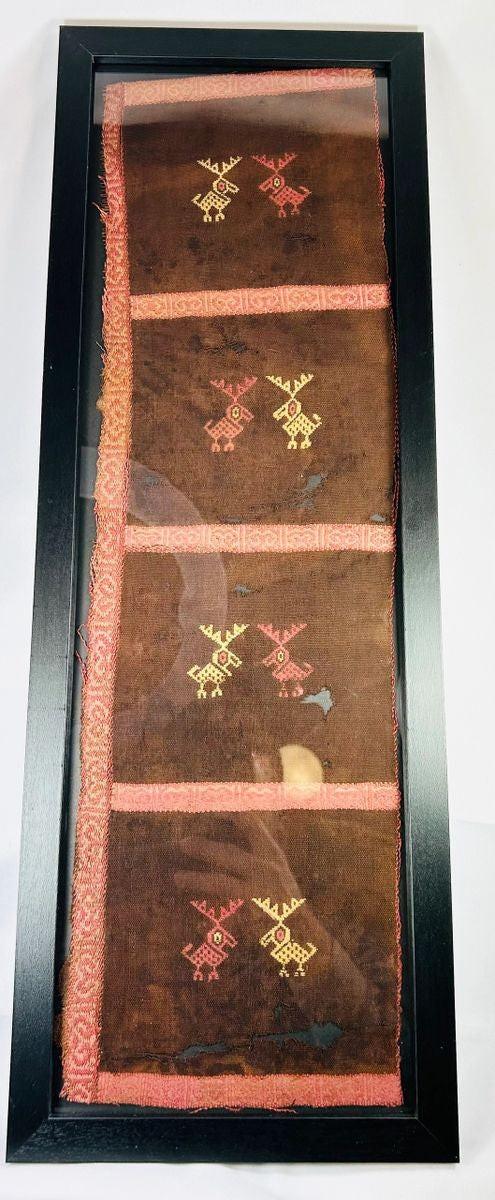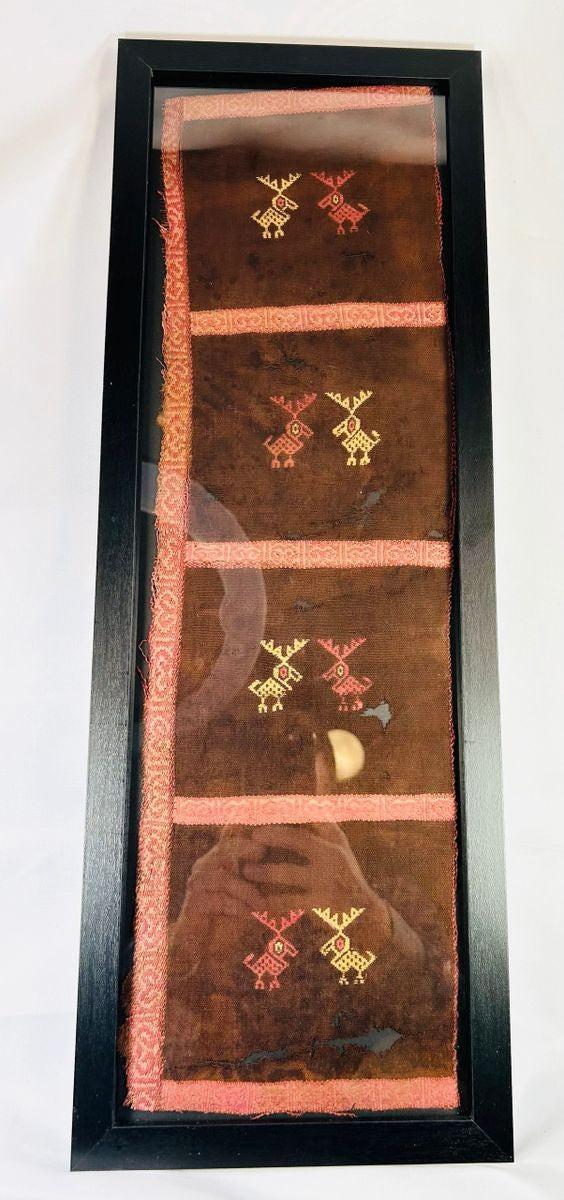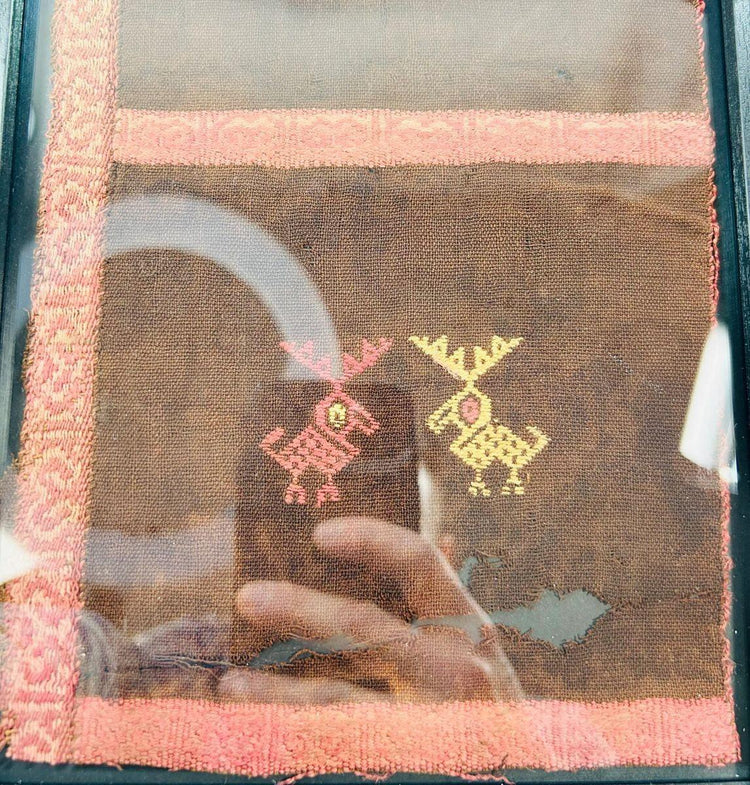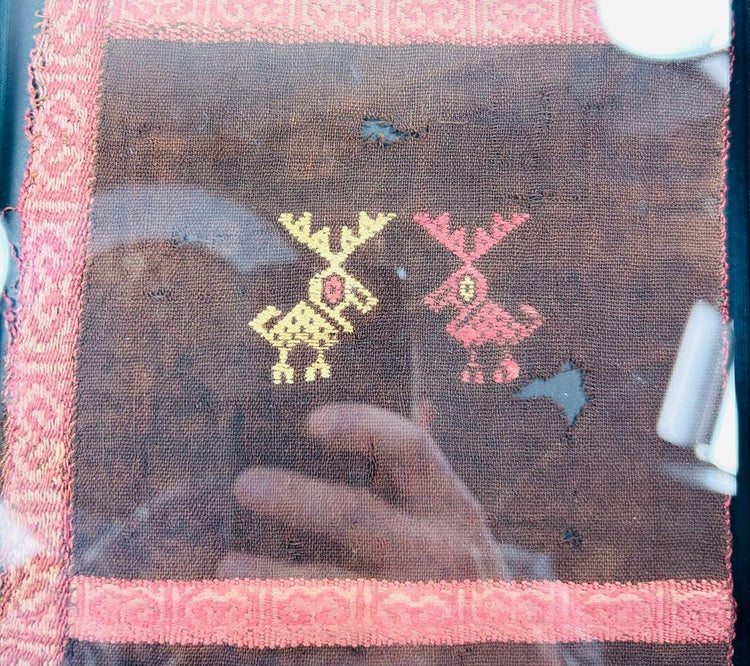Pre-Columbian | Textile with Geometric Animal Embroidery | Circa 1000–1400 CE
Description
More
Less
Historical Context & Origin
Region: Andean Highlands, modern-day Peru
Material: Cotton or camelid wool with natural mineral and plant-based dyes
Period: Pre-Columbian Era, circa 1000–1400 CE
Description
This finely woven textile fragment originates from the flourishing Andean civilizations of the Pre-Columbian period, when weaving was regarded as one of the highest forms of artistic and spiritual expression. Likely once part of a larger garment or ritual cloth, the fragment features vibrant geometric animal motifs, particularly stylized deer, rendered in natural red, yellow, and pink dyes. The borders are decorated with intricate woven bands that display the technical mastery of Andean weavers, whose traditions were passed down across generations. As a rare survival of ancient Peru’s weaving tradition, this fragment embodies both the practical and ceremonial roles of textiles, serving as an artifact of daily life and a profound example of the Andean peoples’ artistic and spiritual legacy.
Features
- Stylized deer motifs woven into the textile, symbolizing fertility and spiritual protection
- Geometric patterning with striking color contrasts in red, yellow, and pink
- Fine hand-weaving technique, characteristic of Pre-Columbian Andean artisans
- Border bands with intricate detail and balanced symmetry
- Natural dyes derived from plants and minerals, retaining vibrancy after centuries
Cultural Significance
Textiles were among the most valued objects in Andean society, often surpassing even gold and silver in importance. They functioned not only as clothing but also as ceremonial offerings and markers of social rank. The depiction of deer, central to both sustenance and spiritual practice, suggests this textile may have served a ritual purpose, possibly linked to fertility, hunting, or ancestral veneration. Its preservation and artistry highlight the importance of weaving as a cultural expression, bridging the earthly and spiritual realms.
Condition
The fragment remains in good condition for its age. Areas of minor fraying, fading, and edge wear are visible, consistent with centuries of preservation and ritual use. The central motifs remain distinct, and the woven detailing retains much of its clarity. Its warm patina and natural mineral deposits enhance its authenticity, making it a well-preserved and culturally significant artifact.
Dimensions (approximate)
Length: 23 in
Width: 8 in
Age
Approximately 600–1,000 years old
Description
Historical Context & Origin
Region: Andean Highlands, modern-day Peru
Material: Cotton or camelid wool with natural mineral and plant-based dyes
Period: Pre-Columbian Era, circa 1000–1400 CE
Description
This finely woven textile fragment originates from the flourishing Andean civilizations of the Pre-Columbian period, when weaving was regarded as one of the highest forms of artistic and spiritual expression. Likely once part of a larger garment or ritual cloth, the fragment features vibrant geometric animal motifs, particularly stylized deer, rendered in natural red, yellow, and pink dyes. The borders are decorated with intricate woven bands that display the technical mastery of Andean weavers, whose traditions were passed down across generations. As a rare survival of ancient Peru’s weaving tradition, this fragment embodies both the practical and ceremonial roles of textiles, serving as an artifact of daily life and a profound example of the Andean peoples’ artistic and spiritual legacy.
Features
- Stylized deer motifs woven into the textile, symbolizing fertility and spiritual protection
- Geometric patterning with striking color contrasts in red, yellow, and pink
- Fine hand-weaving technique, characteristic of Pre-Columbian Andean artisans
- Border bands with intricate detail and balanced symmetry
- Natural dyes derived from plants and minerals, retaining vibrancy after centuries
Cultural Significance
Textiles were among the most valued objects in Andean society, often surpassing even gold and silver in importance. They functioned not only as clothing but also as ceremonial offerings and markers of social rank. The depiction of deer, central to both sustenance and spiritual practice, suggests this textile may have served a ritual purpose, possibly linked to fertility, hunting, or ancestral veneration. Its preservation and artistry highlight the importance of weaving as a cultural expression, bridging the earthly and spiritual realms.
Condition
The fragment remains in good condition for its age. Areas of minor fraying, fading, and edge wear are visible, consistent with centuries of preservation and ritual use. The central motifs remain distinct, and the woven detailing retains much of its clarity. Its warm patina and natural mineral deposits enhance its authenticity, making it a well-preserved and culturally significant artifact.
Dimensions (approximate)
Length: 23 in
Width: 8 in
Age
Approximately 600–1,000 years old
You May Also Like




















